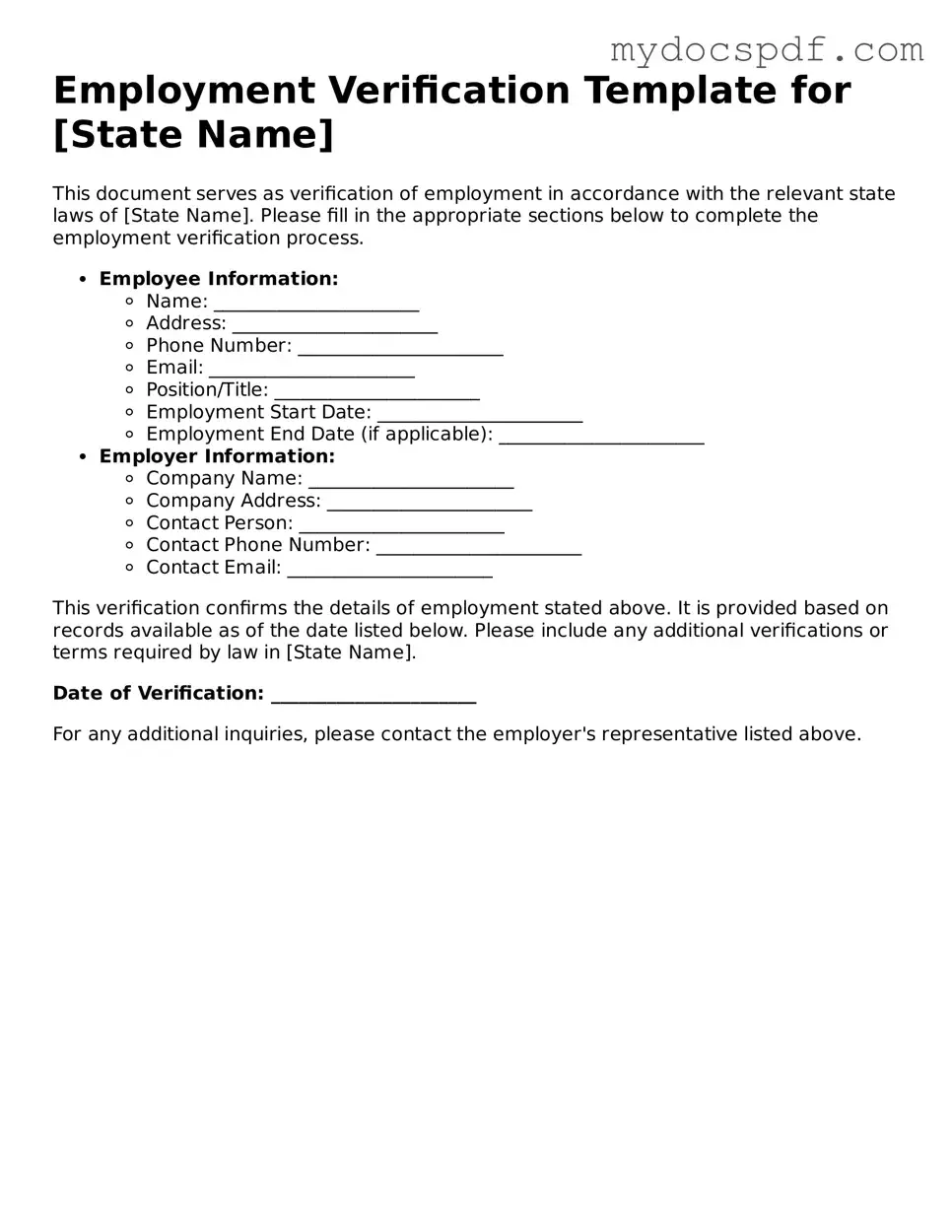Employment Verification Template for [State Name]
This document serves as verification of employment in accordance with the relevant state laws of [State Name]. Please fill in the appropriate sections below to complete the employment verification process.
- Employee Information:
- Name: ______________________
- Address: ______________________
- Phone Number: ______________________
- Email: ______________________
- Position/Title: ______________________
- Employment Start Date: ______________________
- Employment End Date (if applicable): ______________________
- Employer Information:
- Company Name: ______________________
- Company Address: ______________________
- Contact Person: ______________________
- Contact Phone Number: ______________________
- Contact Email: ______________________
This verification confirms the details of employment stated above. It is provided based on records available as of the date listed below. Please include any additional verifications or terms required by law in [State Name].
Date of Verification: ______________________
For any additional inquiries, please contact the employer's representative listed above.
